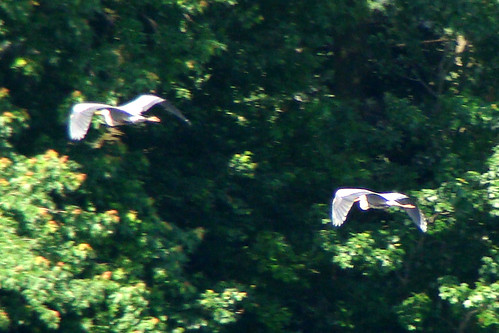
Occasionally you will see a Great Blue Heron standing on top of a tree with wings and tail outstretched and crown fully extended. I think this display might be intended to warn off any rivals or predators. At nearly 5 feet tall with a six foot wingspan, they are scary looking up close!
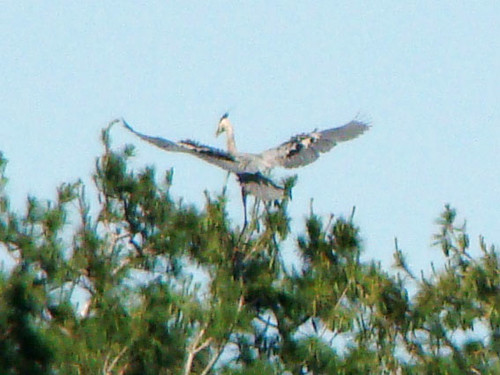
The spotted neck on this bird implies that it's a juvenile Great Blue Heron; one that is less than a year old. On the other hand, the coloring is more like that of an adult. If you could see the crest, it would be easier to identify the bird's age.
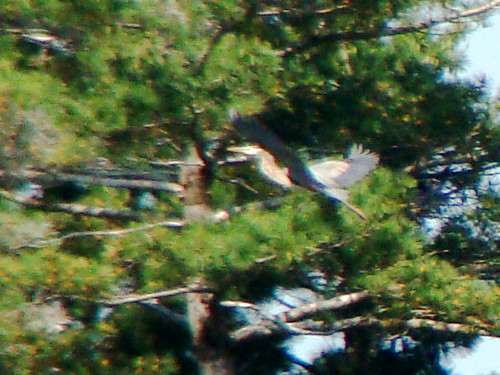
I can't tell if the bird in the nest is a hungry fledgling or an angry adult!
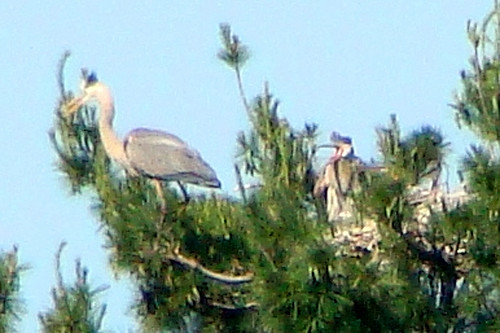
A few minutes later an adult Great Blue lands with a fish in it's mouth.
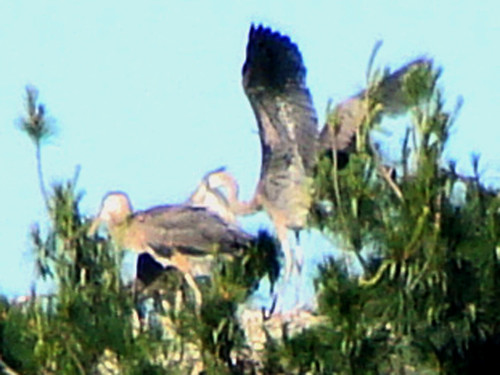
This is a Turkey Vulture. You can tell by it's large size, the small, red, featherless head, and the dihedral (v-shaped) wings when soaring.
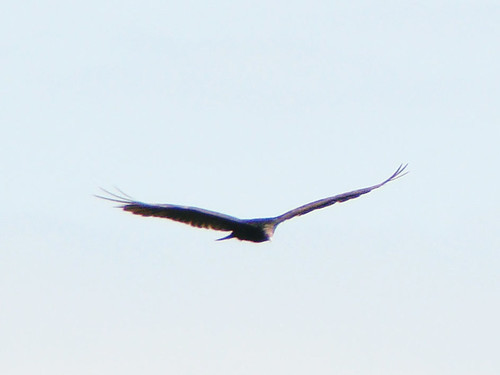
We also saw a pair of Canadian Geese with only one gosling. I was a bit disconcerted by this single child family, because geese usually have large broods. Most people, including many environmentalists, want to see far fewer Canadian Geese around than we have now. They would be happy if every pair of geese had one offspring. Canadian Geese are both a nuisance and a health hazard when large flocks settle in urban or suburban locations. On the Esplanade in Boston, for example, keeping the geese off of the grass is a full time job for a ranger, a dog and a remote controlled boat. Bose has at least one dog whose job is to chase the geese off the Mountain. I haven't seen an overabundance of Canadian Geese on any of the reservoirs, though. Something or someone is effectively keeping the population in check.
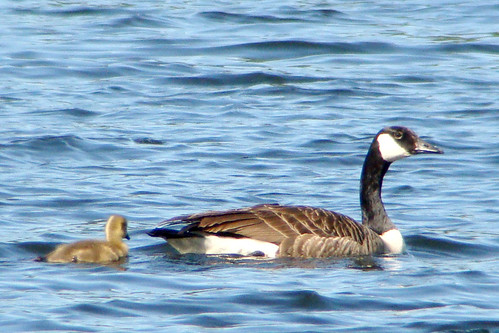
The strangest Great Blue Heron behavior I've ever seen is documented in the following three photos. When I first saw the bird in the first photo, I thought he was dead. I thought he probably died from getting tangled in discarded fishing line, which is a very common occurrence among shorebirds. (See Downstream magazine, Fall 2007, Page 2).
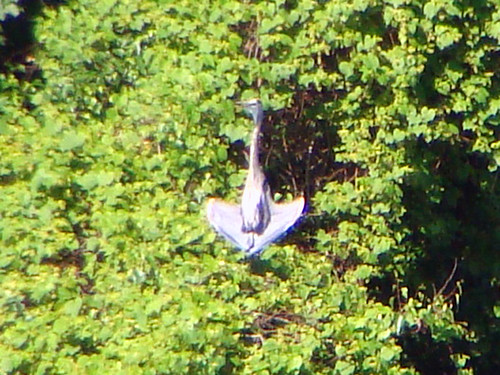
I realized he was still alive when I saw him turn his head back and forth, but I still thought he was hanging there.
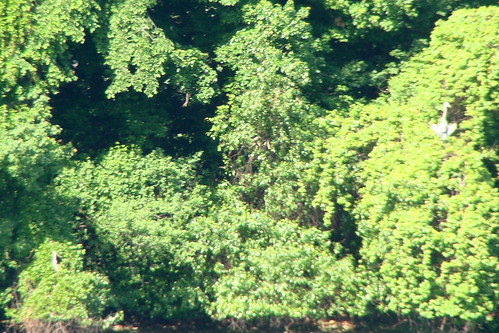
Suddenly he flew away! He wasn't tangled or caught in anything - he chose to take that crazy pose! What is he trying to be, a cormorant?
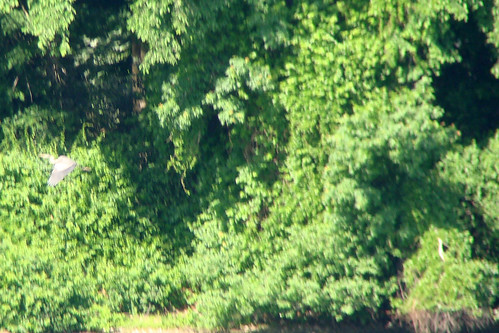
We decided to try and see the other side of the island. On the way back we saw what seemed to be a very wet starling.
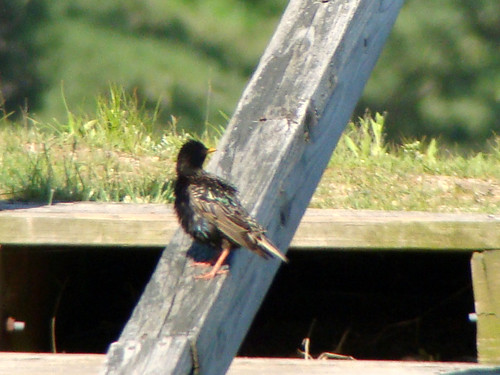
We also saw some flowers that looked like Ladies Slippers. My husband thought these flowers were almost extinct when we were kids. They seem to be recovering nicely around here.
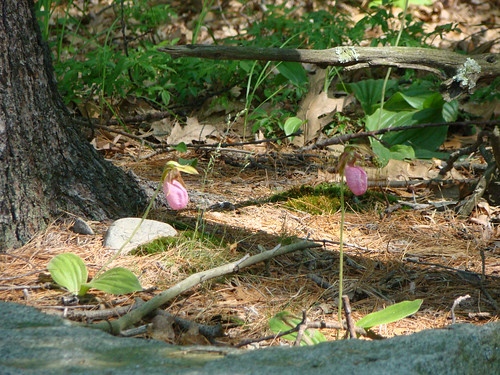
We drove to Chef Orient restaurant, and climbed over the jersey barrier and down to the water's edge. We were still too far away for decent photos, but herons were nesting on this side of the island, too. What surprised us was that at least three of the nests in the back were occupied by Cormorants! Here is a Cormorant taking off while a Great Blue Heron watches from the tree below.
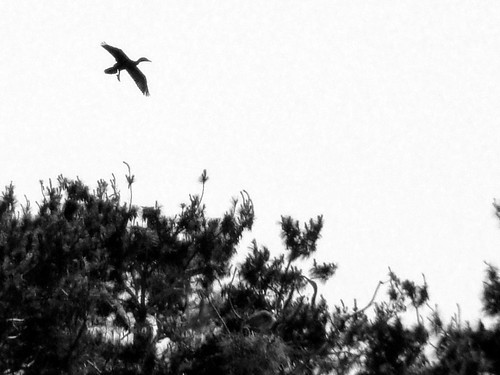
It was on this side of the reservoir that I saw the Spotted Sandpiper. I had never seen one before, so I was thrilled to see this one so close up. Note the spotted underparts and the orange bill with dark tip. Another lifer for me!

Any day that includes seeing a Great Blue Heron is a great day for me. Seeing dozens of Great Blues AND a Turkey Vulture AND a new Sandpiper all in one day is like reaching nirvana!
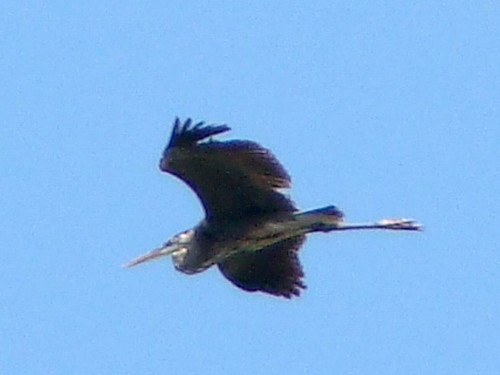

That's gonna be one spoiled little gosling! How cute!
ReplyDeleteNice! the heron rookeries (small ones) that I have watched aren't in the past aren't active now. Need to find a new nest that's relatively accessible to watch and monitor
ReplyDeleteI would give anything to get closer to this island! I have hundreds of pictures of the birds; family groups, feeding, flying, fighting; but they're all too blurry to be of any use. It is just too far away. Getting closer would require either a boat (which isn't legal)or $10,000 worth of photography equipment (which isn't happening). Still, I think about it day and night. Maybe I'll come up with a plan before next year's breeding season!
ReplyDelete